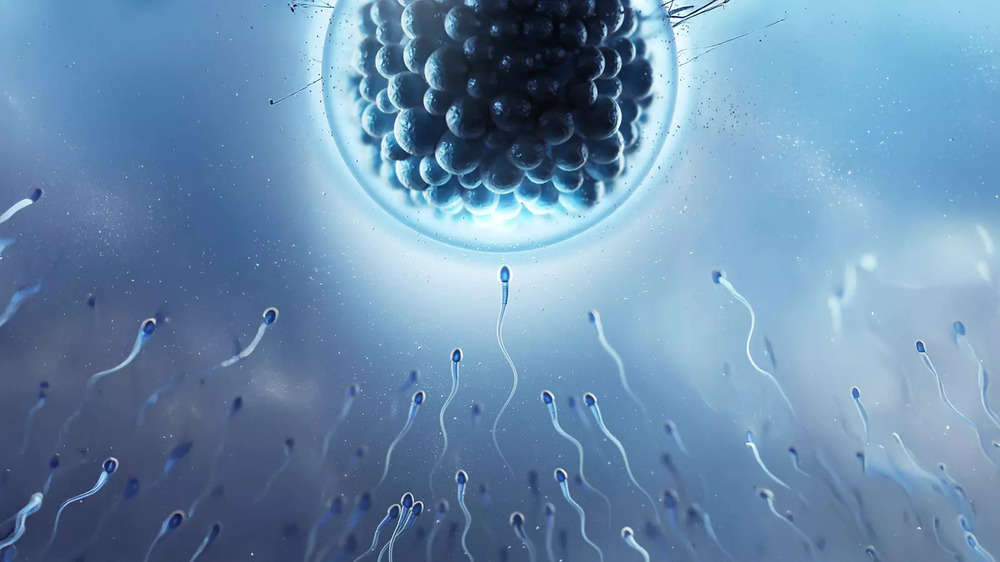In this article:
What Is Zona Pellucida?
The thick, transparent zona pellucida membrane is mostly made of glycoproteins. It develops during the follicular phase of ovarian development and envelops the egg. The ZP is necessary for several fertilisation-related processes, including sperm binding, inducing the acrosome response, and preventing polyspermy, which is the fertilisation of an egg by numerous sperm.Structure Of The Zona Pellucida
There are four primary glycoproteins that comprise the zona pellucida: ZP1, ZP2, ZP3, and ZP4. Each of these elements plays a distinct part in the process of fertilisation:- ZP1: Gives the zona pellucida structural stability
- ZP2: Promotes sperm binding and is essential for sperm-egg contact during the early stages
- ZP3: Initiates the acrosome response by acting as the main receptor for sperm
- ZP4: Although its precise role is unclear, it is thought to have a role in the zona pellucida's general structure and operation
The Role Of The Zona Pellucida In Fertilisation
1. Attachment of sperm
Sperm binding to the zona pellucida is the first stage of fertilisation. Numerous chemotactic cues draw spermatozoa to the egg, and once they get to the zona pellucida, they attach exclusively to ZP3. This contact is important because it sets off a chain of actions that eventually result in fertilisation.2. Acrosome reaction induction
The acrosome response is started when the sperm attaches to the zona pellucida. The acrosome, a cap-like structure on the sperm head, releases enzymes during this phase to aid in the sperm's penetration of the zona pellucida. These enzymes, which include acrosin and hyaluronidase, break down the zona pellucida glycoproteins, enabling the sperm to approach the egg.3. Avoiding polyspermy
Keeping more sperm from entering the egg is vital once the sperm successfully passes through the zona pellucida and unites with the oocyte. This mechanism involves the zona pellucida, which is responsible for the "zona reaction."The zona pellucida is altered by the oocyte's fertilisation process, rendering it impermeable to other sperm. To ensure that only one sperm fertilises the egg and to avoid polyspermy, the oocyte releases cortical granules that change the zona pellucida structure.
4. Encouragement of embryonic growth
The zona pellucida is unbroken after fertilisation and provides the growing embryo with a protective environment. It offers structural stability when the fertilised egg splits and starts to grow into a blastocyst. Additionally, the zona pellucida controls the flow of waste materials and nutrients into and out of the embryo.Consequences For Technologies Related To Assisted Reproduction
Gaining insight into the zona pellucida's function will have a big impact on IVF and other assisted reproductive technologies. In the laboratory, where eggs are extracted and fertilised via in vitro fertilisation (IVF), the zona pellucida plays an even more crucial function.1. Selection of sperm
Choosing healthy sperm is essential for IVF fertilisation to be successful. As a filter, the zona pellucida may help in this process. Damaged or non-viable sperm may not be able to pass through the zona pellucida, although sperm with functioning acrosomes may attach and pass through it.2. Fertilisation Rates and Zona Pellucida
Studies have shown that fluctuations in the zona pellucida's composition may have an impact on the rates of fertilisation. For instance, sperm binding and the acrosome response may be impacted by variations in ZP glycoprotein levels. Clinicians may enhance patient outcomes when they grasp these dynamics and modify regimens in situations with poor fertilisation rates.3. Preservation through cryopreservation
The zona pellucida is also involved in cryopreservation, which is a typical IVF procedure that keeps embryos viable for later use. The zona pellucida may lose some of its integrity throughout the freezing and thawing process. To preserve embryo viability during cryopreservation, the zona pellucida structure and function must be preserved. The zona pellucida, which serves as a barrier and an aid for sperm entrance into the egg, is an essential part of the fertilisation process. Its significance in reproductive biology is emphasised by its involvement in sperm binding, acrosome response induction, and polyspermy avoidance. Furthermore, as the zona pellucida characteristics may affect both the success of fertilisation and the growth of the embryo, a knowledge of its dynamics will be crucial for assisted reproductive technologies.
The zona pellucida continues to be a key area of focus for improving reproductive technology and comprehending fertility as research reveals more intricacies of reproductive processes. Understanding the function of the zona pellucida may give hope to those couples who are having trouble conceiving and help them make educated choices about fertility treatments.
FAQs on the Role of the Zona Pellucida in Fertilisation
- What is the zona pellucida responsible for?
Zona pellucida glycoproteins are responsible for species-specific binding of sperm to unfertilised eggs, causing acrosomal exocytosis, and preventing sperm from attaching to fertilised eggs. - Who digests the zona pellucida?
Acrosin is primarily responsible for the disintegration of the zona pellucida, which aids in the fusing of the membranes of the sperm and egg.











